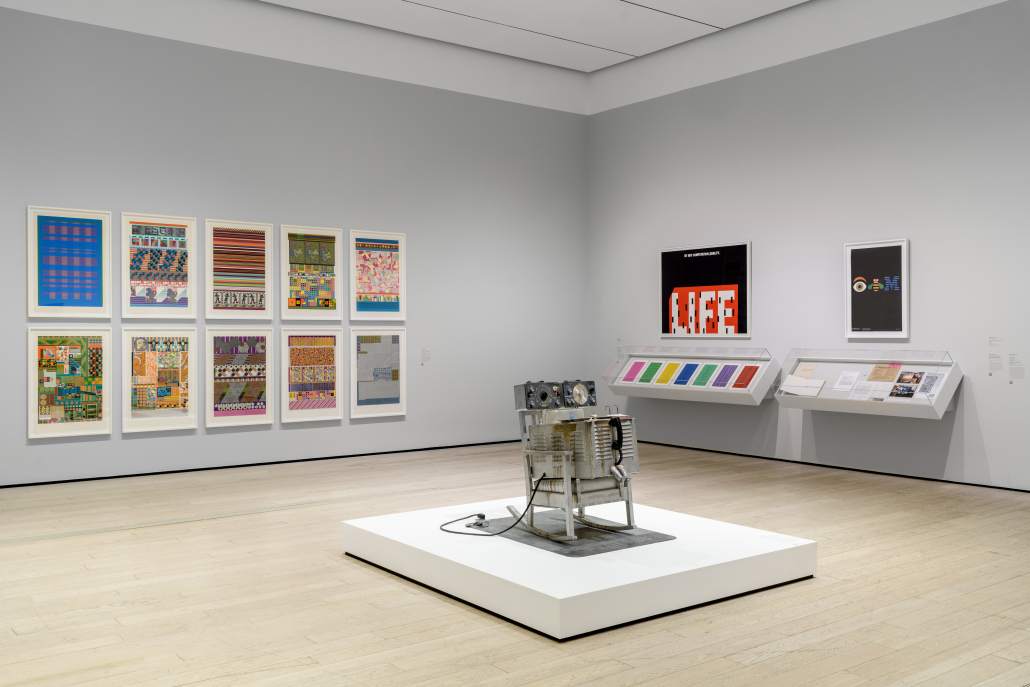Art in the digital age

Right now is a disconcerting time for artists. Recent developments in generative artificial intelligence have sent tremors through academic and creative circles around the world. From powerful chatbots like OpenAI’s ChatGPT and Microsoft’s new Bing search engine to image generators like Craiyon and Midjourney, the distinction between human and machine has become increasingly blurred. From this landscape of uncertainty, a series of questions have emerged: What does it mean to be creative? Is AI derivativeness really much different from the human artistic process? What is the place of the computer in the world of art?
Auspiciously coinciding with this digital reckoning is a new exhibition at the Los Angeles County Museum of Art, “Coded: Art Enters the Computer Age, 1952-1982.” Curated by LACMA’s Leslie Jones, this collection of more than 100 pieces explores the incorporation of digital technology into art in the earliest days of the computer. Before the revolution of the PC, the mainframe dominated popular understanding of digital technology, capturing the attention of many creators active during the period. “Coded” displays the many artistic manifestations of this preoccupation with the computer.
The exhibition is organized into six sections, roughly advancing in chronological order. Curated to construct a sense of progression in the capabilities of computer technology and humanity’s fascination with it, the show presents art that is often overlooked or disregarded, now with a new gravity and relevance. As Jones notes in the exhibition advisory, “‘Coded’ brings to light early digital or ‘computer art’ that has long been overlooked, recontextualizing it to encourage a new way of looking at mainstream art of the period.”
Entering the exhibition, one is greeted by Edward Kienholz’s 1965 work “The Friendly Grey Computer — Star Gauge Model #54,” a strangely anthropomorphic piece that reimagines the mainframe in organismic terms. The metal casing, outfitted with large, eye-like dials and doll legs protruding in front, represents an early attempt to humanize the computer. From the outset, this piece demonstrates the tensions involved in artistic endeavors aimed at uncovering the technological mystique.
Proceeding into further sections of the show, the relative accessibility of this exhibition quickly dissipates. With the paradoxical circumstances of the relationship between art and computer technology established, “Coded” turns toward exploration of the various implications of the digital movement, from aesthetics to epistemology to politics.

Frederick Hammersley’s collections of “computer drawings” from 1969 play into the presentation of those implications. Using the program Art1, one of the first programs designed for computer artists, Hammersley created an array of printed images using only alphanumeric characters. Feeding his designs into an IBM mainframe, a printer produced rectangular renderings of various pictures — like his “SCALLOP POTATOES.” The construction of images from such fundamental units as letters, numbers and symbols demonstrates the emergence of new types of artistic expression and talent, while also challenging preconceptions of the ontological qualities of artwork.
Even then, Hammersley seems to constitute one of the tamer figures presented in the collection. In particular, the pieces of Vera Molnár and Harold Cohen represent deep exploration of the possibilities of art through the computer. Molnár’s “À la recherche de Paul Klee,” as the title suggests, draws influence from Klee’s 1927 “Variations.” In her “Searching for Paul Klee,” Molnár programmed horizontal, vertical and diagonal lines into the computer, producing geometric figurations strongly resembling the original 1927 piece.
Cohen’s works relied on the use of his AI drawing program named AARON, which — combined with the “turtle” drawing mechanism — could autonomously produce new images. One of his pieces displayed in “Coded” is entitled “74D10.” The abstract computer drawing of various amorphous shapes, hand-embellished with color by Cohen, evokes a strange sense of familiarity, perhaps with a resemblance to Kandinsky. The deceptive semblances of humanity in Cohen’s work give strong reason for reflection on the nature of the artistic process.
“Coded” is an exhausting exhibition. Even though it only covers 30 years, the collection represents a true odyssey, using its large breadth of works to engage in a profound artistic discourse. Curiously, as one leaves the gallery, they must again pass by Kienholz’s “Friendly Grey Computer.” The uncanny sense of humanity and life emitted from the work becomes extraordinarily poignant after the digestion of the rest of the show. With its unflinching “eyes,” the work seems to beckon for friendship and cooperation, eager to partner in the creation of beautiful art. As Kienholz’s eccentric computer demonstrates, “Coded” focuses not on the potential dangers of AI, but rather the exciting new frontiers it presents.
“Coded” is on display at LACMA until July 2. Students can receive an admission discount with the presentation of a valid student ID.

